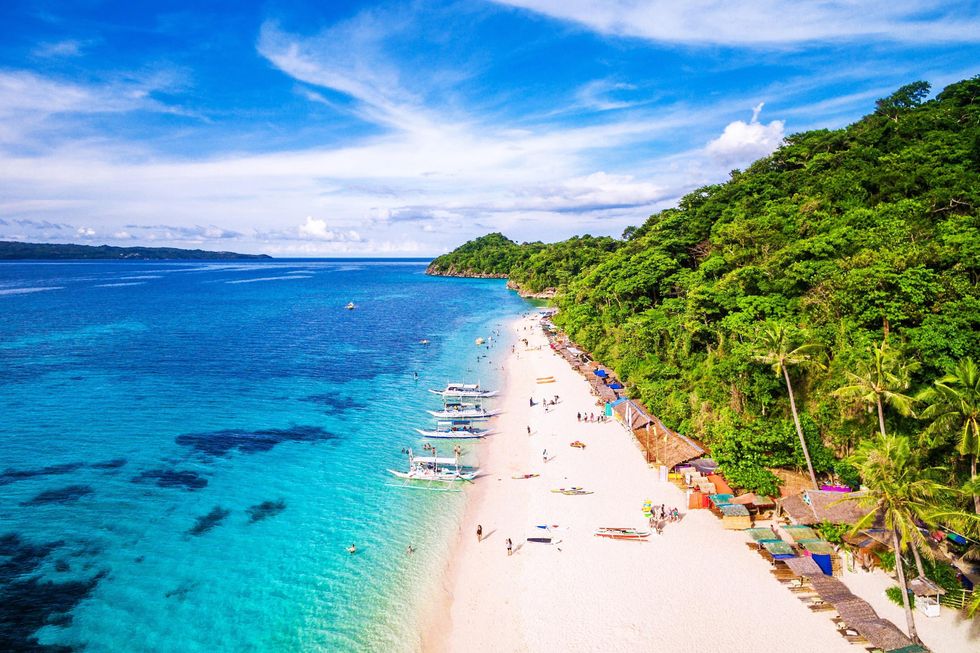.
The Philippines is one of the most tropical countries in the world, but it's hard to believe with looks like they're from another planet. The country is filled with tropical rainforests and golden and white-sand beaches; you've got an embarrassment of natural wonders right at your door.
From top destination cities to the remote towns of the country, there's always more to explore and discover than what meets the eye. Here are seven eco-friendly travel opportunities across the Philippines that are worth your while.
1.Eco-Tourism in Palawan
The Palawan province is home to some of the country's most pristine beaches and eco-tourism destinations. The region has a rich marine ecosystem and a diverse range of landscapes that offers visitors an opportunity to experience the best of both worlds.
The province comprises 13 islands divided into two groups: Eastern and Western. The islands of Busuanga, Coron, El Nido, Dumaluan and Malapascua make up the Western group, while Sabang and Sibuyan make up the Eastern group.
The Philippines' only island province is home to some of the country's most stunning natural beauty, but it's also rich in biodiversity and has many hidden eco-hotspots.
2.Explore an Eco-Sanctuary on Dinagat Island
Dinagat Island is a paradise for nature lovers. The island is not only home to pristine beaches and coral reefs but also has a rich biodiversity that can be explored by trekking and camping.
The Dinagat Islands Marine Reserve was declared in 1997 as one of the first marine reserves in the Philippines. Not only is this island surrounded by stunning reefs and lagoons, but it also boasts some of the most diverse wildlife on record — including endangered sea turtles.
If you want to experience nature firsthand and get away from it all, this is an excellent destination for you.
3.Trekking the Banaue Rice Terraces
Banaue Rice Terraces is one of the most popular destinations in the Philippines. It is also one of the country’s top treks, with many tourists flocking to this region each year.
These terraces are a UNESCO World Heritage Site designated as an ASEAN Heritage Park. The rice terraces were carved out by water over thousands of years, creating a staircase-like structure known as the “Banaue Rice Terraces.”
The Banaue Rice Terraces cover an area of more than 50 square kilometers and consist of more than 200 separate rice fields along with several waterfalls, rivers, and streams. In addition, there are several different trails that visitors can take as they trek from one field to another.
Some people like to hike through the fields, while others prefer taking different trails that lead them through forests, streams, or rivers.
4.Diving and Snorkeling in Anilao
Anilao is a small town on the island of Luzon that is known for its clear coastal waters and dives sites ideal for snorkeling and scuba diving — even if you're not a certified diver! In addition, the waters around Anilao are warm year-round, making it ideal for scuba diving and snorkeling trips.
The clear waters make it easy to see coral reefs and other marine life like sea turtles, jellyfish, corals, and more. The area is also ideal for both beginners and experienced divers due to its shallow depths and clear waters, making it easy for everyone to enjoy the beauty of the underwater world.
Several dive shops offer tours that take you out into the ocean with their equipment to explore underwater caves, coral reefs, fish life, shipwrecks, and other exciting sights.
5.Hiking up Mt. Pinatubo
The Philippines' active volcanoes are a great way to travel the country and explore its natural wonders. The largest volcano, Mt. Pinatubo, is located in Zambales province and has been dormant for over 150 years. It's still possible to climb it, though not as easy as it used to be due to erosion and rock falls.
Hiking up Mt. Pinatubo is one of the most popular eco-friendly travel activities to enjoy in the Philippines. It's a 5-hour hike to the summit, with an elevation gain of 1,200 meters (4,000 feet).
There are several different routes up the mountain, but we recommend hiking around the crater rim and taking some time to enjoy the view at the top of the crater lake. The view from the top is spectacular, with a 360-degree panoramic view of Lake Pinatubo and Mt. Pulag.
6.Whale-Watching in Donsol Bay
Donsol Bay, located on Baler Island's western coast, is one of the best places in the country to spot humpbacks and other whale species. The Philippines government created Donsol International Whale Sanctuary to protect these animals from human interference and commercial whaling. Still, it also allows tourists to see them in their natural environment.
The government has declared the area an eco-tourism destination because of its rich biodiversity, including endangered whale species that visit here to breed annually during mating season (December through March).
During your stay, check out EcoTourism Donsol Beach Resort & Hotel, which offers accommodation near Donsol Beach and a range of tours around the bay — from sunrise cruises with food and drinks included to full-day excursions that include lunch and sightseeing stops along Marine Drive.
7.Sailing Through Puerto Princesa's Underground River
Imagine sailing through an underground river, which a waterfall has carved out. That's what you'll experience if you take a kayak tour through Puerto Princesa's underground river.
The tour begins at the Crystal Cave, where you'll learn about the history of this natural phenomenon that is hidden beneath the city. Then, it's off to explore the river itself and see how far it goes.
It's also an excellent place for swimming and snorkeling. You can rent kayaks or take a guided tour to learn about its history, which includes the use of this river by Filipino tribes as far back as 500 years ago.
Traveling Can Be Environmentally Sustainable
We hope you've learned that Philippine tourism has shifted towards more eco-friendly experiences in recent years. As a result, you can do quite a few things to avoid hurting the environment - from choosing tours with reusable water bottles and recycling to booking flights that reduce your carbon footprint.
One thing is for sure: there is no reason why responsible travel should be expensive! So if you're planning your next vacation, consider these options to make it an eco-friendly adventure.

















